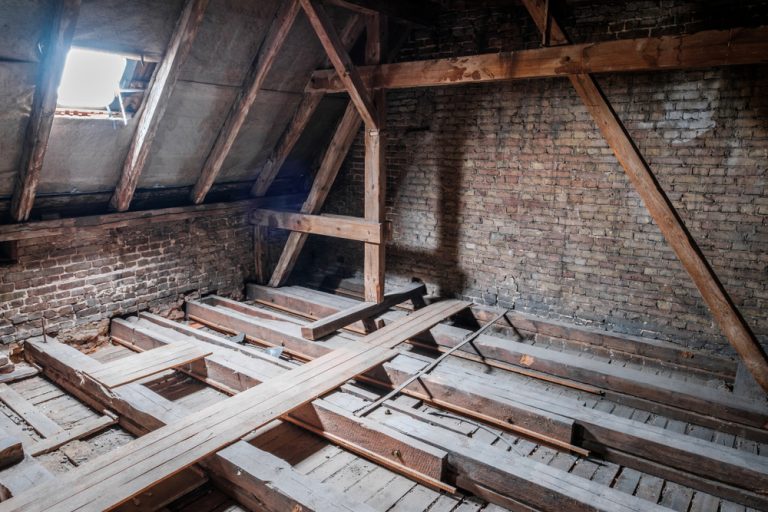As a home ages, its roof insulation materials may not be providing the level of benefits needed for your home. In order to maximize home comfort and energy efficiency, you need energy-efficient roof insulation. However, there are a variety of roof insulation types, and choosing the right option will hinge on several factors.
Pinnacle Home Improvements specializes in high-quality roof insulation. Our roof insulation and ventilation guide can provide additional insights, while this blog post will help you learn more about the types of roof insulation and their advantages.
Introduction to Roof Insulation
Roof insulation plays a vital role in the energy efficiency, comfort, and overall health of your home. While roof insulation lasts for a while, over time, the materials tend to degrade over the years and will require an upgrade at some point to resume their effectiveness.
Roof insulation provides many benefits, including:
Energy Efficiency
Roof insulation provides an additional barrier to prevent heat loss in the winter while preventing heat gain in the summer. Since HVAC systems are one of the biggest contributors to energy costs, minimizing the amount of work this machine needs to do can help reduce energy bills. In addition to lower energy bills, roof insulation will prevent your heating and cooling system from working too hard to get to your desired temperature.
Temperature Regulation
Roof insulation works to minimize the transfer of heat, allowing you to keep the indoor temperature consistent. When the temperature is to your liking, you’ll feel more comfortable in any season.
Prevention of Moisture Buildup
Moisture in the attic can lead to mold growth and structural damage. With plentiful roof insulation, you can create an environment better suited for moisture resistance and keep your home healthy.
Reduced Carbon Footprint
Another important role of roof insulation is how it contributes to a better world overall. When you have enough roof insulation, it lowers your energy consumption, allowing you to make a positive impact on the environment.
Types of Roof Insulation Materials
There are 6 key types of roof insulation that you may want to consider for your home:
1. Spray Foam Insulation
Spray foam insulation is made with isocyanate and polyol resin in liquid form, which react and expand to quickly fill a space when combined. Soon after, spray foam insulation hardens and turns into a solid layer of insulation. Open-cell spray foam is light and lets some moisture pass through it, while closed-cell foam spray is denser and has a higher R-value that prevents moisture intrusion and lends structural support.
2. Foam Board Insulation
Foam board insulation, also known as rigid foam insulation, is another type of roof insulation that has a high R-value and moisture resistance. It’s easy to install and comes in several types, such as expanded polystyrene, extruded polystyrene, polyisocyanurate, and polyurethane.
3. Fiberglass Insulation
Fiberglass insulation is made of fine glass fibers and is widely used to reduce heat transfer and sound transmission. It works by trapping air in the fibers to slow down the transfer of heat and reduce noise. Fiberglass insulation can come in batts of pre-cut pieces to fit standard framing spaces, rolls that can be cut to size, or blown-in as loose-fill insulation, ideal for attics and walls.
4. Cellulose Insulation (Blown-In Insulation)
Cellulose insulation, or blown-in insulation, is mostly made from recycled paper, such as newspapers, though it’s treated with fire retardants for greater protection. It’s an energy-efficient and eco-friendly choice, and is even more popular because it can be blown in to fit in a variety of spaces.
5. Reflective Insulation
Reflective insulation uses reflective foil that’s used to send radiant heat away. You may want this type of insulation if you live somewhere warmer, allowing you to keep your interior even cooler.
6. Structural Insulated Panels
Structural insulated panels are exactly what they sound like – panels of insulation fitted inside layers of plywood or another material. They’re a strong solution for a more energy-efficient home.
Benefits of Each Insulation Type
How do these materials for insulation measure up?
Spray Foam Insulation
Spray foam insulation is great for a more energy-efficient home as it prevents heat transfer and reduces energy consumption. It’s also effective for sealing up cracks, gaps, and crevices to stop air drafts. Closed-cell spray is ideal for serving as a moisture barrier, though any type of foam can reduce noise and last a long time.
Rigid Foam Insulation
If you choose foam boards, you’ll get a high R-value to resist heat flow for a more comfortable interior. Foam board is also water-resistant, making it an excellent option if your roof and attic are prone to moisture. It’s durable and can even be installed as a DIY project; however, to ensure proper functionality, it may be best to call in a professional.
Fiberglass Insulation
Fiberglass is an excellent material for regulating temperature, and it’s cost-effective, too. This material is non-combustible and great for dampening sound.
Cellulose Insulation
One of the best insulations for high R-value is cellulose, and it’s environmentally friendly. You’ll find this to be an excellent choice if you have air leaks or drafts, which can help you avoid wasting energy. If you choose cellulose insulation, make sure to pick one that has been treated to resist moisture, as this will prevent mold growth that can cause costly issues for your home.
Reflective Insulation
By reflecting radiant heat away, reflective insulation is a fantastic choice for homes in hot climates. Up in the attic, it’s great for reducing heat gain and keeping homes cool and comfortable, no matter how unbearably hot it is outside.
Structural Insulated Panels (SIPs)
One of the easiest insulation materials to install is SIPs, which provide structural support that adds peace of mind. Since these panels are designed to interlock, they can truly provide proper attic insulation while creating an airtight seal that reduces leaks. They’re faster to install, too, which can cut down on labor for your roofing system.
Factors to Consider When Choosing from Roof Insulation Types
When deciding on the best insulation for your home, you have many suitable options. However, you’ll need to look at a few factors to help you determine which one will provide optimal performance.
Climate
Your local climate will be a key factor, and the R-factor of the insulation will be a focal point. If you live in a colder climate, you will want to focus your insulation search on materials that have higher R-values. These will help you retain heat in cold weather. If you live somewhere warm most of the year, your insulation should have reflective properties, which will reduce heat gain and serve to keep you cooler.
Roof Type
Climate is one of the biggest factors, though the type of roof you have will also be a big consideration in your insulation choice. If you have a pitched roof, batt insulation is a good option since it can fit between the beams with ease. For homes with flat roofs, rigid insulation boards are better able to give you the proper coverage you need while preventing the buildup of moisture.
A complex roof with varying shapes and features will be best insulated by spray foam. Any roof with a low slope will likely need specialized materials. You should have a professional take a look at your roofing system to make sure you get the right recommendations for your home.
Budget
Some types of insulation are more budget-friendly than others, though weighing the long-term costs can help you choose. Foam sprays and rigid varieties are a higher cost upfront, though they will provide excellent longevity. Energy savings are important to think of when you plan for new insulation. You will save more over time, which may make that higher initial price worthwhile.
Additionally, ease of insulation may mean that you might be able to handle a DIY project. Certain materials, like foam spray, aren’t recommended for homeowners to do on their own. Professionals are required for the safe and proper installation of these materials.
If you have moisture issues, especially if you live in a humid location, consider an insulation that can resist water damage and mold. Foam materials are often great for these factors, though reflective materials can help your home feel cooler.
Almost everyone who needs new insulation is concerned about saving energy, and checking the R-value of the material can help you make the right choice. Eco-conscious homeowners can choose materials that minimize their carbon footprint while maximizing efficiency.
If your existing insulation isn’t providing the benefits you need for your home, you should review these six best roof insulation types and the various factors mentioned above to help you make the right choice for your home. Proper insulation is the key to your comfort and energy savings at any time of year. Pinnacle Home Improvements can help you evaluate your home and find the right insulation to meet your needs.















